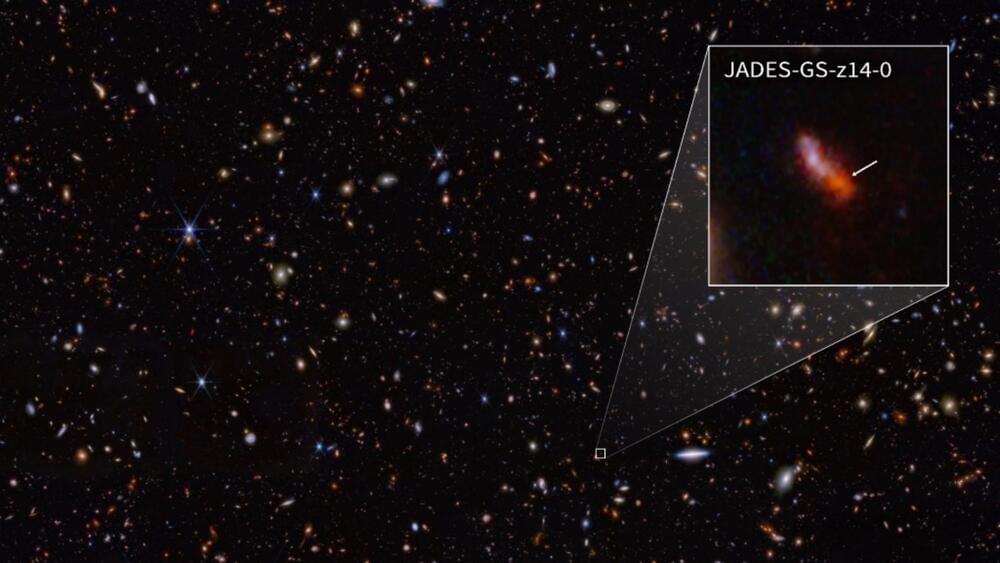Proud Moment! India Makes History Launches World’s First 3D-Printed #RocketEngine | Space Technology.
#DNAVideos | #India | #Rocket | #SpaceTechnology.
For more, click here.


The true nature of time has eluded physicists for centuries, but a new theoretical model suggests it may only exist due to entanglement between quantum objects.
Maj. Gen. Dr. Paul Friedrichs, MD is the Inaugural Director of the Office of Pandemic Preparedness and Response Policy, at the White House (OPPR — https://www.whitehouse.gov/oppr/), a permanent executive office aimed at leading, coordinating, and implementing actions to prepare for and respond to pathogens that could lead to a pandemic or significant public health-related disruptions in the U.S., and principal advisor on pandemic preparedness and response, appointed by President Biden.
Dr. Friedrichs was previously the Joint Staff Surgeon at the Pentagon where he provided medical advice to the Chairman of the Joint Chiefs of Staff, the Joint Staff and the Combatant Commanders, coordinating all issues related to health services, including operational medicine, force health protection and readiness among the combatant commands, the Office of the Secretary of Defense and the services. He also led the development and publication of the initial Joint Medical Estimate and served as medical advisor to the Department of Defense COVID-19 Task Force.
Dr. Friedrichs received his commission through the Reserve Officer Training Corps and his Doctor of Medicine (M.D.) from the Uniformed Services University. He has commanded at the squadron and group level, served as an Assistant Professor of Surgery and led joint and interagency teams which earned numerous awards, including “Best Air Force Hospital.” As Chair of the Military Health System’s Joint Task Force on High Reliability Organizations, he oversaw developing a roadmap to continuously improve military health care. As the Command Surgeon for Pacific Air Forces, U.S. Transportation Command and Air Combat Command, the general and his teams identified gaps, developed mitigation plans and enhanced readiness for future conflicts and contingencies.


Researchers at Carnegie Mellon University’s Robotics Institute (RI) have developed a robotic system that interactively co-paints with people. Collaborative FRIDA (CoFRIDA) can work with users of any artistic ability, inviting collaboration to create art in the real world.


Link :
The JWST Advanced Deep Extragalactic Survey (JADES) program led to the discovery of this new galaxy dubbed JADES-GS-z14-0.
“The instruments on Webb were designed to find and understand the earliest galaxies, and in the first year of observations as part of the JWST Advanced Deep Extragalactic Survey (JADES), we found many hundreds of candidate galaxies from the first 650 million years after the big bang,” said Stefano Carniani from Scuola Normale Superiore in Pisa, Italy.
They stumbled across this exceptional galaxy in October 2023 while scouring through the vast pool of JADES program data.

The next “Spider-Verse” film may have a new animation style: AI.
Sony Pictures Entertainment (SPE) CEO Tony Vinciquerra does not mince words when it comes to artificial intelligence. He likes the tech — or at the very least, he likes the economics.
“We are very focused on AI. The biggest problem with making films today is the expense,” Vinciquerra said at Sony’s Thursday (Friday in Japan) investor event. “We will be looking at ways to…produce both films for theaters and television in a more efficient way, using AI primarily.”

From Shanghai Jiao Tong University & Microsoft Parrot Efficient Serving of LLM-based Applications with Semantic Variable.
From shanghai jiao tong university & microsoft.
Parrot.
Efficient Serving of LLM-based Applications with Semantic Variable.
The rise of large language models (LLMs) has enabled LLM-based applications (a.k.a.
Join the discussion on this paper page.